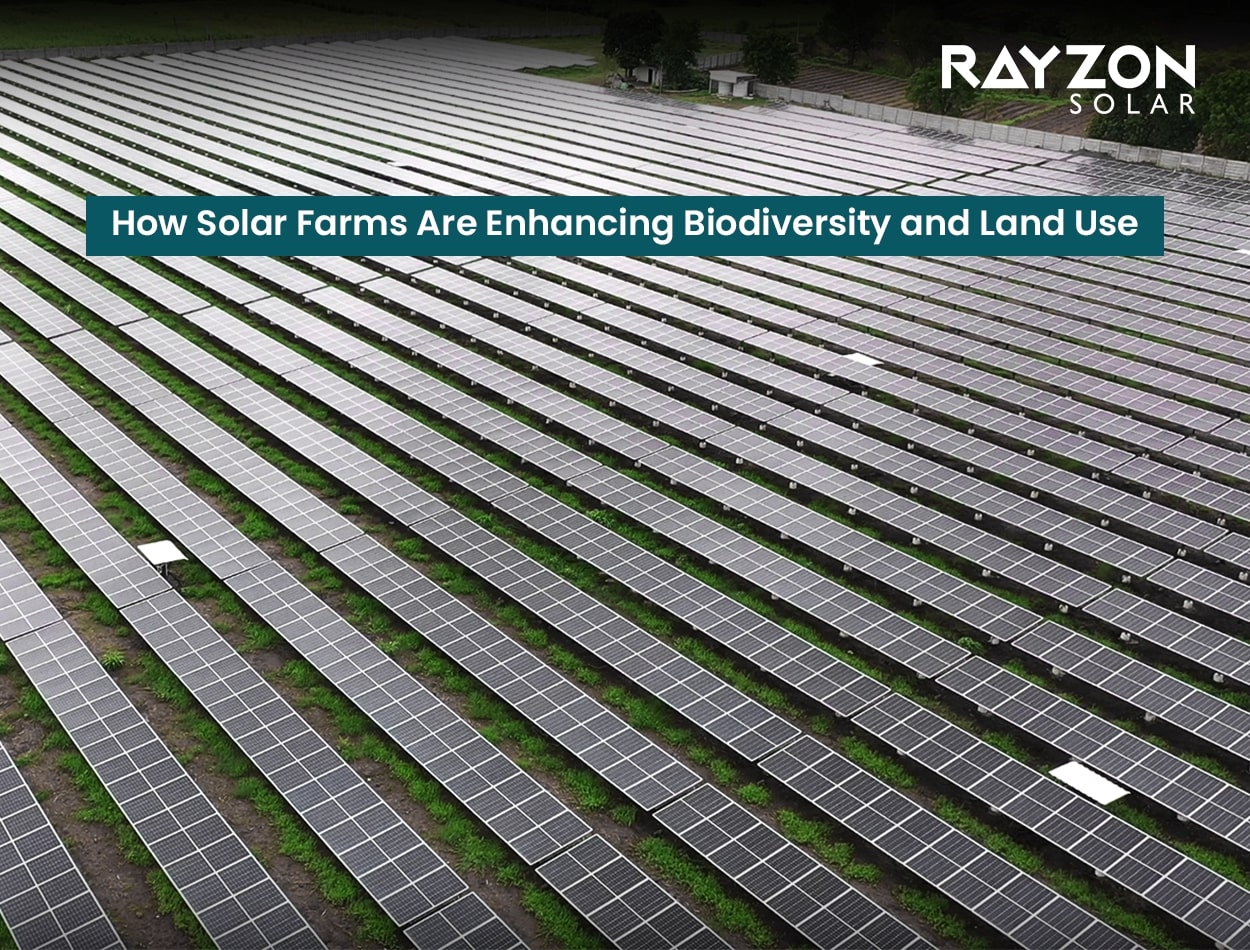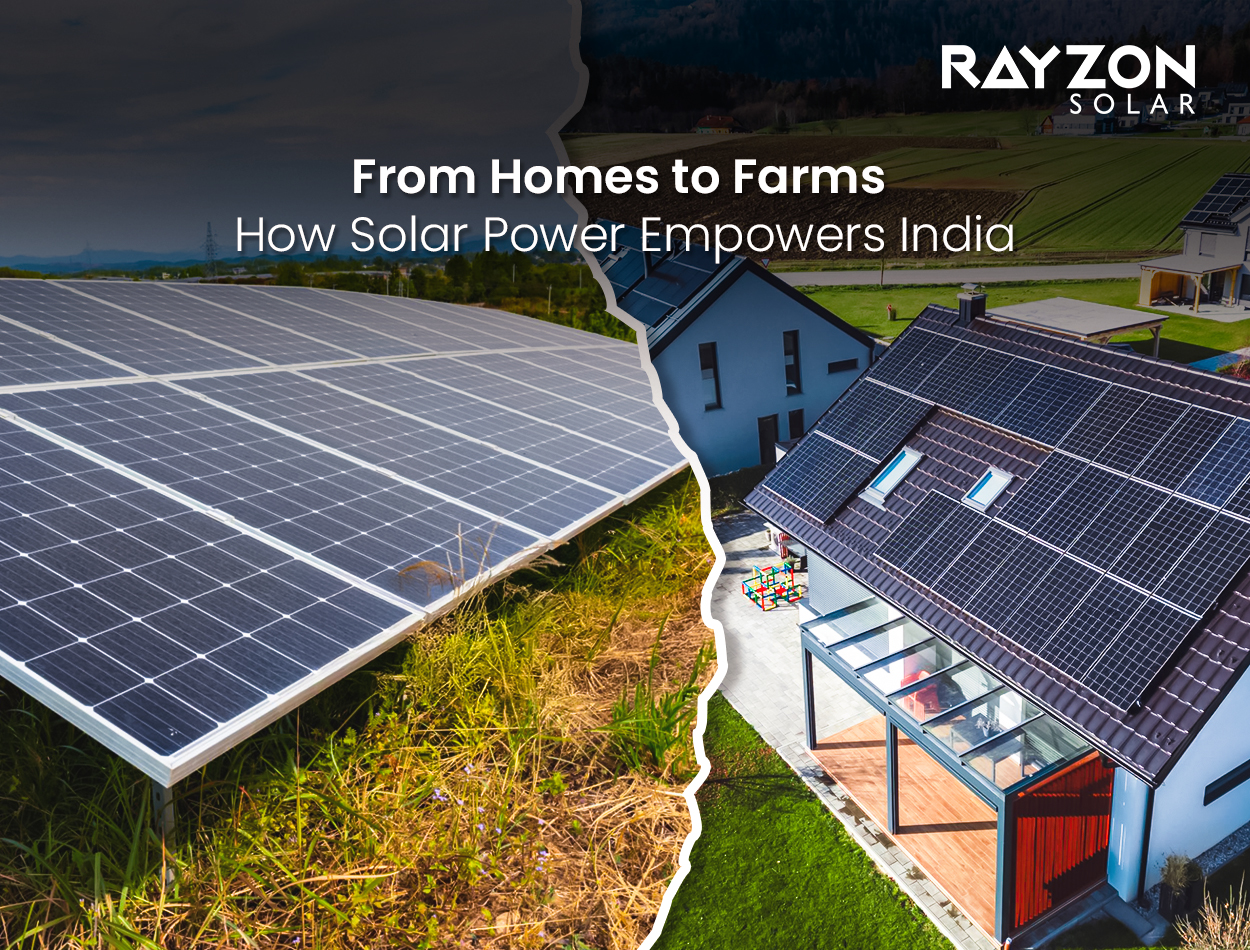
How Solar Farms Are Enhancing Biodiversity and Land Use
Solar farms function as pioneering solutions in establishing both green power and ecosystem sustainability. The combination of biodiversity-promoting approaches transforms solar farm operations which establishes them as fundamental climate change solutions that enhance ecosystem health. The company Rayzon Solar positions itself as a sustainable solar energy solution provider while developing a balance between renewable electricity generation and ecological protection.
The Role of Solar Farms in Biodiversity
Solar farms with eco-friendly designs help biodiversity preservation through their major support role. Solar farm operators who select pollinator-friendly vegetation, build wildlife corridors, and restore habitats have enabled the combination of renewable energy with ecological conservation goals.
- Pollinator-Friendly Solar Farms: The concept of pollinator-friendly solar farms demonstrates sustainable development by planting native vegetation under and around solar panels. The plants in these locations invite bees and butterflies together with other pollinators which maintain the sustainability of local agricultural systems.
- Wildlife Corridors: A properly planned solar farm design establishes wildlife corridors which enable the free movement of species as they thrive.
- Reduced Soil Degradation: Solar farms protect the land through vegetation coverage which enables the reduction of soil erosion while improving soil quality to support multiple organisms.
Land Use Optimization Through Solar Farms
Traditional energy production methods utilize large sections of land space and create significant environmental impact. Solar farms manage land utilization while producing energy through sustainable activities which integrate power generation with additional green measures.
Dual-Purpose Solar Farms:
Agrovoltaics: Agrovoltaics merges farming with solar power to allow farmers to cultivate crops under solar panel installations. Implementing these methods leads to improved land management and increased crop productivity because solar panels offer sun protection to crops and act as moisture retainers.
Transforming Marginal Lands:
Solar farms find their placement primarily on underutilized land territories including brownfields and damaged areas. Solar facilities bring life to worthless terrain through this method of revitalization.
Carbon Sequestration:
The implementation of solar farms enables the planet to trap more carbon by encouraging plants to grow. The management of greenhouse gas emissions through vegetation growth becomes possible with solar farm implementation which creates a healthful environmental outcome.
Rayzon Solar: Pioneering Eco-Friendly Solar Farms
The solar projects of Rayzon Solar have advanced their integration of biodiversity through substantial efforts. Rayzon Solar dedicates itself to sustainability by creating innovative solar farm practices that both protect natural ecosystems and improve their ecology.
Key Initiatives by Rayzon Solar:
- Adopting Pollinator Habitats: Install native wildflowers with grasses in the vicinity of solar panel installations to establish pollinator habitats.
- Eco-Friendly Designs: The implementation of solar systems on open dirt areas uses eco-friendly design principles to maintain minimal disruption to land areas.
- Community Collaboration: Local communities should join forces with the project to guarantee solar facilities satisfy power demands and protect natural ecosystems.
Environmental Benefits of Solar Farms
The environmental benefits of solar farms extend far beyond energy production:
- Habitat Restoration: Solar farms create green spaces that can serve as habitats for birds, insects, and small mammals.
- Reduced Water Usage: Unlike conventional power plants, solar farms require minimal water, preserving local water resources.
- Lower Carbon Footprint: By generating renewable energy, solar farms reduce reliance on fossil fuels, contributing to lower carbon emissions.
Challenges and Solutions
Solar farms provide many benefits to society but must manage three specific barriers including public resistance to available land supply and ecological ecosystem disruptions. Solutions include:
- Community Engagement: Educating stakeholders about the environmental and economic benefits of solar farms.
- Smart Zoning Policies: Zoning laws should encourage solar farm development by focusing on unused property through appropriate zoning policies.
- Sustainable Planning: Designing solar farms with a focus on minimal environmental impact and maximum biodiversity enhancement.
FAQs: Solar Farms, Biodiversity, and Land Use
1. Do solar farms affect wildlife habitats?
Yes, but in positive ways. Solar facilities designed thoughtfully offer wildlife spaces where birds and pollinators as well as various species can live while increasing biodiversity levels in the area.
2. What is agrovoltaics along with its operational principles?
Agrovoltaics exists as a method that combines agricultural areas with solar power generation systems. Underneath solar installations, growers plant crops that get both shade coverage and water-conserving effects for higher agricultural outputs.
3. Are solar farms good for the environment?
Absolutely. Solar farms create sustainable energy while reducing carbon footprints and they protect water resources together with their ability to restore natural habitats and create wildlife-friendly areas.
4. Can solar farms be installed on degraded lands?
Degraded or marginal lands can be turned into environmentally beneficial solar farms through their excellent use for repurposed areas.
5. How do pollinator-friendly solar farms support agriculture?
The introduction of bees and butterflies into solar farms happens through plantings that support pollinators for crops. Next to farms solar facilities help their vegetation stay healthy therefore they produce larger harvests.
Conclusion
The role of solar farms expands beyond clean energy generation because they serve as foundational elements for ecological land handling and biodiversity improvement. Solar farms transform how energy production relates to environmental conservation through the implementation of eco-friendly techniques including agrovoltaics and habitat establishment for pollinators as well as land-saving approaches. Through its leadership position, Rayzon Solar shows renewable energy systems can blend perfectly with nature to guide a sustainable and environmentally friendly future.
Rayzon Solar is reshaping the solar market by combining innovation with sustainability—delivering clean energy while revitalizing ecosystems, preserving biodiversity, and setting new benchmarks for responsible solar development. Visit our website to explore how Rayzon Solar makes a difference.



